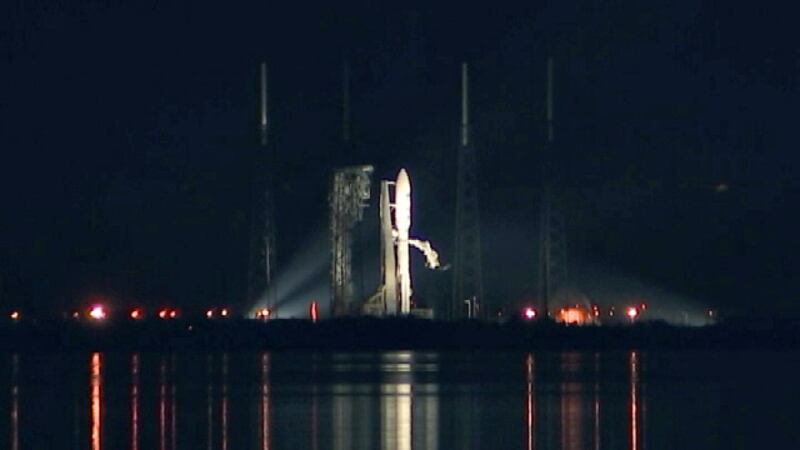The second of four weather satellites is scheduled to be launched from Cape Canaveral on March 1, 2018.
NOAA GOES-S will be launched aboard an Atlas V rocket -- just like its older sibling, GOES-R, soon to be GOES-16, did on Nov. 19, 2016, weighing over 11,000 pounds on Earth.
The Geostationary Operational Environmental Satellites are launched with a designated letter: R, S, T, U. Once they are placed in their geostationary orbit, then they are given a number: 16, 17, 18, 19.
%
%
NOV. 2016 GOES-R LAUNCH
T-1 days for new weather eye to launch; behind the scenes at Kennedy Space Center
T-1 days for new weather eye to launch; behind the scenes at Kennedy Space Center
GOES-R, latest weather satellite set to launch on Saturday; better data, forecast improvements
After rigorous testing, calibration and a validation phase, a satellite most likely replaces an older sibling, becoming GOES-East or GOES-West, or placed as a backup.
%
%
GOES-R, now GOES-16, was launched from Cape Canaveral in November 2016. After a year of testing, it was announced in May 2017 that it would become GOES-East late in the fall. It is currently in the process of moving eastward and it is expected to arrive to its permanent position around mid-December, officially becoming GOES-East -- covering from the west coast of Africa to the eastern Pacific. Its main focus is the Atlantic basin, where it will be able to capture incredibly detailed weather phenomena, closely watching the tropics.
About a year after the March 2018 launch, GOES-S will replace GOES-West, covering all the way from Guam to the Caribbean, and closely monitoring the Pacific tropical region and the upcoming weather systems approaching the contiguous United States.
GOES-S is the twin of GOES-R and will have the same instruments aboard.
Wow! What an experience! My 1st 🚀 launch! #GOESR success! / Que experiencia, primera vez viéndolo en vivo y directo! pic.twitter.com/rwHMb0E5IX
— Irene Sans (@IreneSans) November 20, 2016
Cox Media Group








